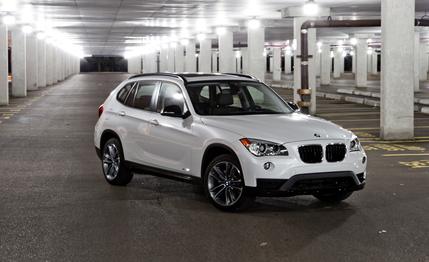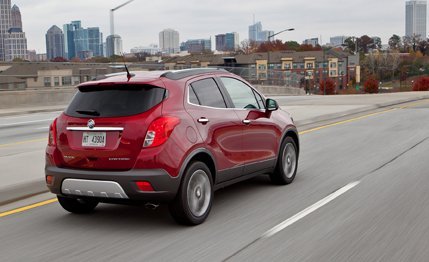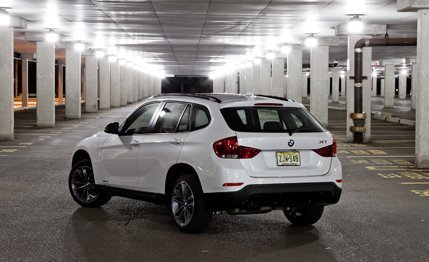 Instrumented Test
Instrumented Test


It’s been on sale in Europe for three years already, meaning the X1 is not new. And this repackaging of 3-series bits into yet another small crossover doesn’t break any new ground. It does, however, leave us longing for things increasingly missing from the land of the Roundel. Like a manual transmission. Or the sense that this car was conceived to deliver a singular driving experience.
The X1 drives like a 3-series, and by that we mean similar but not identical to. Its suspension is athletic and the steering is passable, yet still too numb. The car feels solid and resolute, though a 3822-pound curb weight has us pining for the smaller, lighter 1-series hatchback that BMW won’t sell here.
Thanks to its higher roofline, the five-door X1 offers more headroom than the previous-generation 3-series wagon, with which it shares its wheelbase and underpinnings. The X1 is 2.1 inches shorter, yet other key measurements, like legroom and cargo capacity, are essentially a wash.

Powered by the same 240-hp, 2.0-liter turbocharged four from the newer 3-series, the all-wheel-drive X1 we tested was quick, hitting 60 mph in 6.2 seconds. But it took an excruciating 189 feet to stop from 70 mph—a pickup-like performance, courtesy of its low-rolling-resistance tires.
Also frustrating: A stop-start system that sends shudders through the X1 every time it kills or refires the engine. Efficiency should not trump refinement, especially in a vehicle with an as-tested price of $45,095. (A fully loaded, 300-hp X1 xDrive35i can top $50,000.) At least the base model, the rear-drive sDrive28i, starts at a mere $31,545—cheaper even than the BMW 128i.
The X1 could be worse, much worse. Its appearance in the U.S. now serves mostly as a placeholder until BMW can ready the front-wheel-drive models foreshadowed by the Concept Active Tourer it showed at the 2012 Paris auto show.
Cue ominous horror-film music.